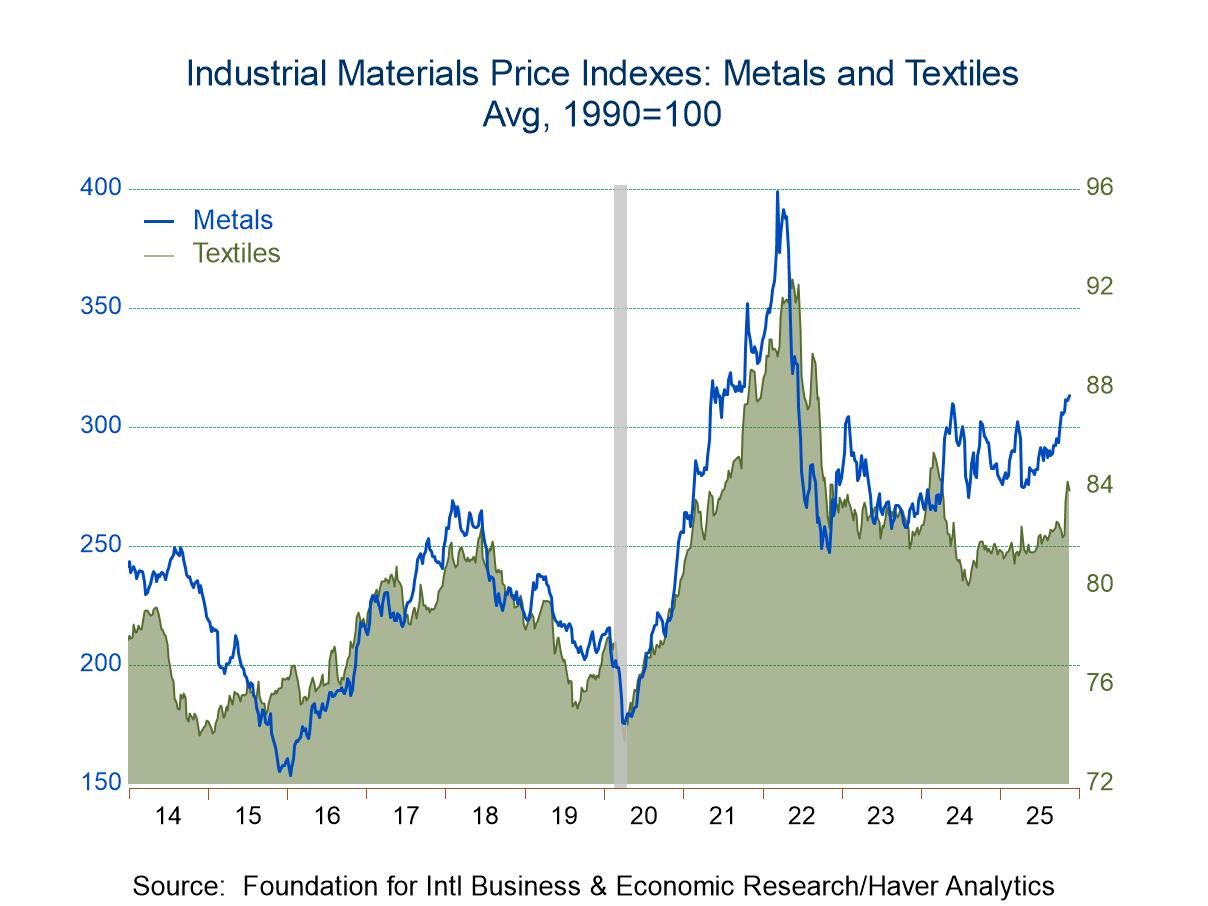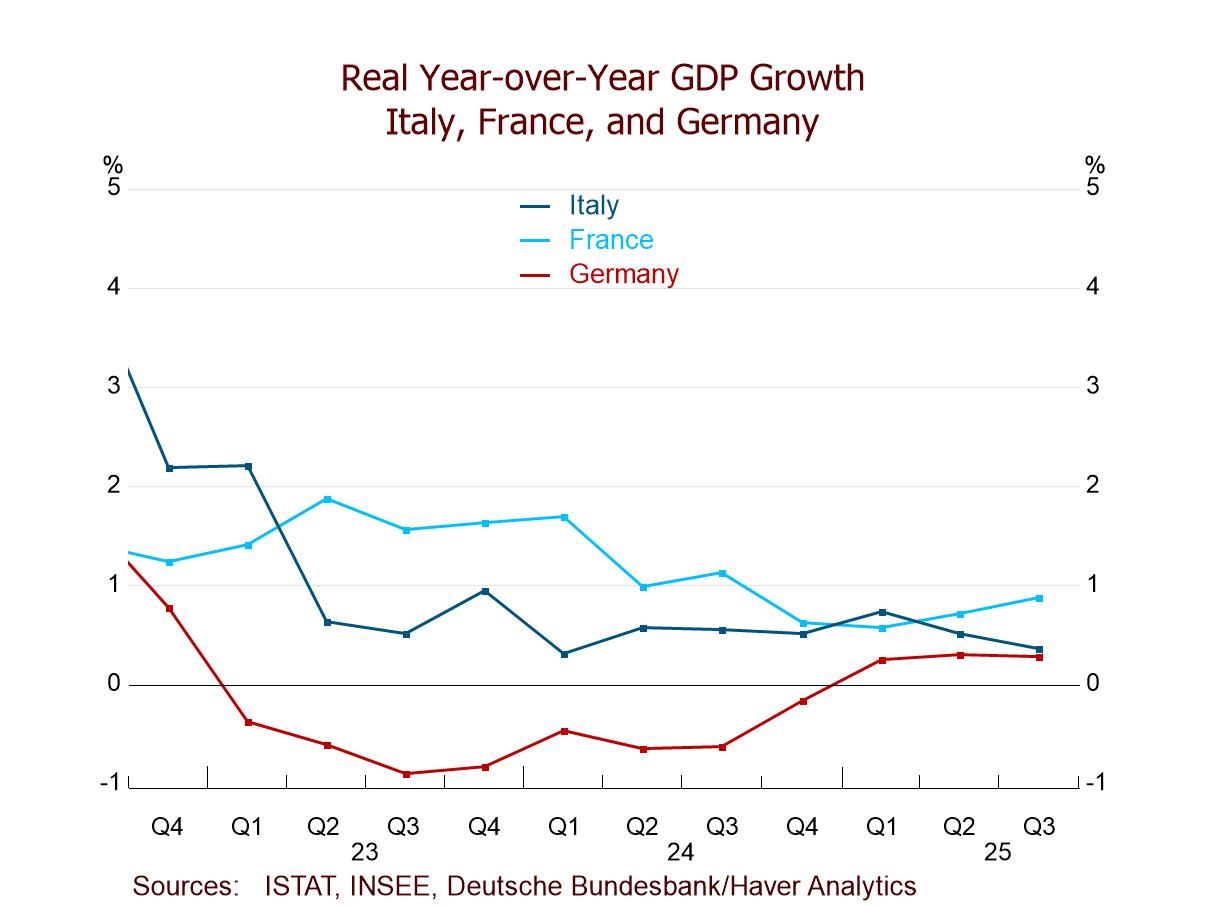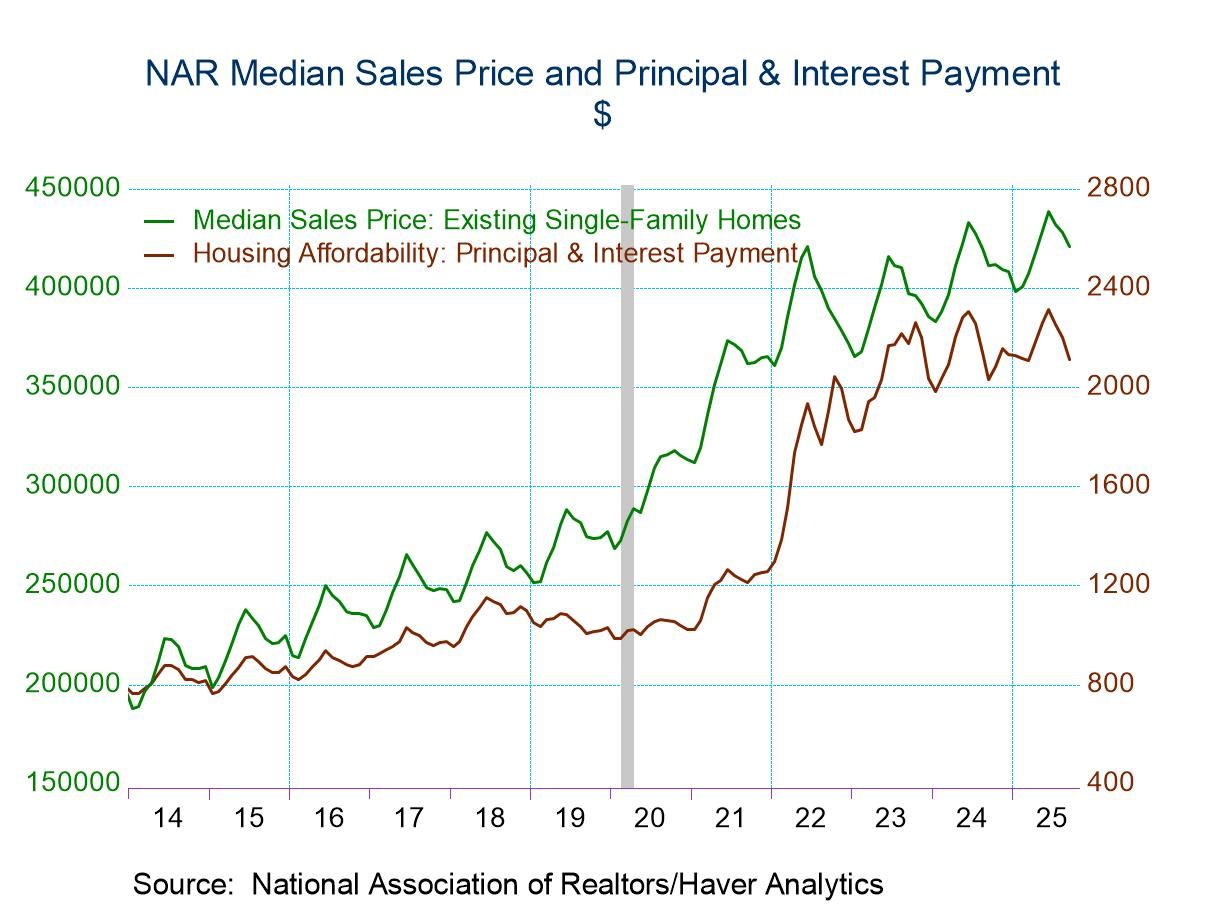 Global| Jun 01 2015
Global| Jun 01 2015EMU Shows Little Manufacturing Momentum
Summary
The EMU manufacturing PMI in May edged up to 52.3 from 52.0 in April. The three-month average is barely crawling higher from 12-month to six-month to three-month. EMU momentum is barely identifiable. Germany show the same bare-bones [...]
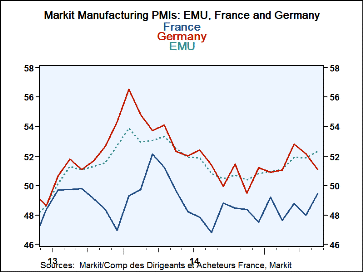 The EMU manufacturing PMI in May edged up to 52.3 from 52.0 in April. The three-month average is barely crawling higher from 12-month to six-month to three-month. EMU momentum is barely identifiable.
The EMU manufacturing PMI in May edged up to 52.3 from 52.0 in April. The three-month average is barely crawling higher from 12-month to six-month to three-month. EMU momentum is barely identifiable.
Germany show the same bare-bones up-creep in its moving average but with a weaker observation in May than in April and with a May value below its three-month average.
While the EMU manufacturing gauge sits in the 64th percentile of its historic queue, the German PMI sits in its 43rd percentile and has a weak relative reading.
Germany's weak standing in the EMU is surprising since it is the most competitive economy in the EMU. The weakness in the German manufacturing sector reflects several things. First of all, it reflects the weakness in the global manufacturing sector and slack demand for the capital goods in which German specializes. Second, it reflects that Germany has trade patterns plugged into regions that are struggling, such as China, or under geopolitical constraints, such as Russia.
Germany's queue standing for its manufacturing sector among reporting EMU nations is tied for lowest with Austria. The German raw manufacturing score is the third weakest (fourth strongest) among six reporters falling behind Spain, the Netherlands and Italy.
But EMU is doing better...
Even though the gains are slight, all reporting EMU countries show improving manufacturing PMI averages from 12-month to six-months to three-month. Among the other 10 countries listed in the bottom on the table, half have PMI averages falling in three-month compared to six-month.
Here the global weakness is apparent. Russia, China, Switzerland and Norway each have extremely low queue percentile standings for their May PMI readings. Russia and Norway are showing their weakest levels since 2010.
While the EMU shows some upward momentum, its leading economy is still seeing its manufacturing sector struggle. Weakness is still the rule of the day in the global manufacturing sector. May was not a turning point.
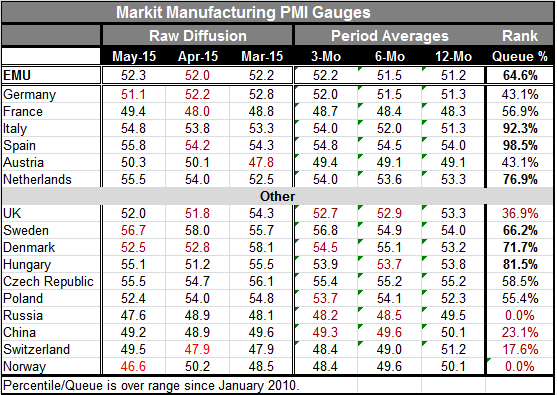
Robert Brusca
AuthorMore in Author Profile »Robert A. Brusca is Chief Economist of Fact and Opinion Economics, a consulting firm he founded in Manhattan. He has been an economist on Wall Street for over 25 years. He has visited central banking and large institutional clients in over 30 countries in his career as an economist. Mr. Brusca was a Divisional Research Chief at the Federal Reserve Bank of NY (Chief of the International Financial markets Division), a Fed Watcher at Irving Trust and Chief Economist at Nikko Securities International. He is widely quoted and appears in various media. Mr. Brusca holds an MA and Ph.D. in economics from Michigan State University and a BA in Economics from the University of Michigan. His research pursues his strong interests in non aligned policy economics as well as international economics. FAO Economics’ research targets investors to assist them in making better investment decisions in stocks, bonds and in a variety of international assets. The company does not manage money and has no conflicts in giving economic advice.



